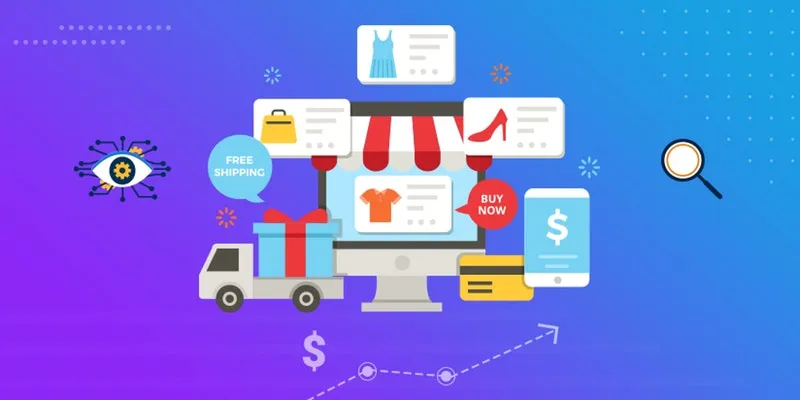Empowering local businesses is key to growth of ecommerce in India
The fastest-growing ecommerce market of the world, India is poised to become the second-largest ecommerce market. And, organising logistics in Tier II and III cities will facilitate this growth.
India is the fastest-growing ecommerce market and is expected to grow to $200 billion by 2026, and become the second largest in the world by 2034. This growth trajectory has been propelled by increased internet penetration, affordable data plans, and the growing number of smartphone users in India.
627 million users in India are on the internet, of whom, 493 million can be defined as regular users.
Since there are 493 million regular users online, one would expect to see a comparable increase in online purchases and transactions. However, in-depth research indicates otherwise.

Only 40 percent of internet users transact online while the remaining 60 percent research products online but prefer offline channel transactions.
The ecommerce sector has the potential of reaching $50 billion from the current $39 billion by unlocking new users and reengaging internet dropouts. Given the wider coverage of internet, ecommerce is no longer limited to certain cities. There is a huge opportunity for ecommerce in Tier II and III locations, where internet is accessible and affordable but adoption may be low due to limited digital literacy, perceived risk, language constraints, and lack of infrastructure.
There is a whole market of buyers in these cities, interested in buying better and bigger brands. Since it is impossible for brands to be physically present everywhere, they rely on ecommerce to cater to these markets.
But here’s the catch – most buyers in these cities mistrust ecommerce and online transactions due to a lack of familiarity or bad experiences. To engage users, the industry needs to create access and awareness, and focus on locally-relevant sustainable solutions that build trust and lead to engagement.
Logistics: deal maker or breaker
Unique omnichannel solutions can help brands build a fully integrated shopping experience for their customers. We have been quick to notice the buyer’s interest, and the huge gap in supply. Research indicates that logistics needs to be executed differently in Tier II and III cities to make a positive impact on the buyer’s behaviour.
Our industry needs solutions that enable shopkeepers in these areas to grow their businesses by getting direct access to the brand’s inventory and the flexibility to buy anytime, anywhere and in any configuration they like.
To empower businesses the ecommerce industry needs to address the great divide between the demand and supply by enabling the local shopkeepers to be
online partners, who also act as individual warehouses and fulfilment centres.
Unlocking mindset with local merchants
Local shop owners in these locations are the key stakeholders because of the reach they have. These individuals understand the market needs and buyer behaviour. Most importantly, they are familiar faces and part of the community. To become a strong partner, merchants need easy access to high-quality brands and the opportunity to bring in more variety to the buyers.
To manage space and offer different categories of products, they can keep a minimal inventory of high demand products in their shop, and also offer delivery of these branded and quality products to their customer’s doorstep.
This means they can bring new brands to their market, see if the products are being liked, take feedback and then buy more or less. No pressure at all!
In the offline world, the shopkeeper creates a balance in the supply chain. This individual is accessible and answerable to the buyer, and that makes a huge difference in the purchase decision. So, it is easier to buy products from him, rather than online.
We are a country of entrepreneurs, and local businesses can benefit from the opportunity to come online and sell handmade products, such as tailored clothing, sweaters etc. This can help empower local businesses, especially women entrepreneurs, and also lead to more variety in product categories for buyers.
New markets
India’s logistics sector is expected to reach over $215 billion by 2020, so there is a substantial room for growth with the right business strategies. The growth of logistics is dependent on demand and supply.
Last-mile delivery is the key to creating a positive impact on the consumer’s mind. While it is an expensive and a time-consuming part of the logistics process, startups are coming up with unique solutions to help these merchants.
Brands can avoid the hassle of building infrastructure and putting a logistics system in place. The system of shop owners can be self-sufficient in creating reach for their brands. The brand builds more trust, especially since the products are either picked up at the shop or delivered to the buyer at home within defined timelines, leaving no room for botched deliveries.
Also, cancellations and doorsteps refusal are reduced because of the personal nature of interaction between the seller and the buyer.
The way forward
The ecommerce industry should aim to capture new markets and grow sales, and at the same time, build partnerships with local businesses to help them grow, diversify, and drive the economy resulting in more local jobs creation, digital awareness, and opportunities.
With innovative solutions, we can build more access to quality products, better services, and greater opportunities for the customers in these cities.
(Edited by Saheli Sen Gupta)
(Disclaimer: The views and opinions expressed in this article are those of the author and do not necessarily reflect the views of YourStory.)








